Native Roots’ Buck Dutton on Creating Effective Marketing Strategies
ColoradoMarijuana Industry News March 7, 2023 MJ Shareholders 0

Once thought to be an easy sell, hitting a cannabis home run in the legal market has turned out to be a challenging pastime for practitioners of the marketing arts, no matter the breadth and depth of experience they bring to the industry. For reasons that range from over-regulation to markets awash with similar products, marketers must contend with headwinds that make creating a sticky brand difficult but not impossible. It is precisely the sort of challenging environment that serious marketing professionals thrive in, and the reason why we like to hear their views on marketing in cannabis and the strategies they use to successfully brand their products and/or company.

Buck Dutton, VP of Marketing for Native Roots, a Colorado-based single-state vertical operator with 20 dispensaries throughout the state, is one such professional. Following a ten-year stint at Procter & Gamble, where he oversaw The Art of Shaving retail business, Dutton made the move into cannabis two years ago when Native Roots came calling. The change meant relocating to Colorado, but as he explained to Cannabis Business Executive during a recent call, his new job is not that dissimilar from his previous one in terms of the fundamental nature of the business.
“I was with Procter & Gamble for about 15 years,” he said. “I was in Atlanta, which is where I’m from, and then got transferred to Miami, and was down there for about 10 years. I enjoyed my time at P&G, and I learned a lot, but my specific brand was changing course, and I had the opportunity to take a severance payout or apply for a new job within P&G.”
The Art of Shaving was one of many P&G brands, and not a particularly large one. “I don’t know how many brands they have today,” he added, “but it’s a $60-$70 billion company and we were a $100 million brand, so we were tiny in the grand scheme of things. Now, compared to a small business, most people would say we were a midsize brand, but in the P&G world, we were definitely small.”
That said, they did have parent company resources to use, a mixed-blessing at times, according to Dutton. “I always said, on the small brands like ours, that P&G was both a blessing and a curse,” he explained. “They had super deep pockets that allowed us to play and be experimental and do things that if we were being run by private equity, we would not have been able to do, and we got to experiment with a lot of P&G innovation. It was a hindrance because we used a lot of the P&G systems, and they were so big that a lot of times they hindered us from being as nimble as we wanted to be.”
The opportunity to work for Native Roots was serendipitous, to be sure, though not exactly part of Dutton’s larger plans at the time. On the contrary, it (and the pandemic) interrupted his intent to unwind after so many years in the corporate trenches.
“I opted for severance,” he said of his decision to leave P&G. “I thought it was time for me to do something new. I had zero idea what I wanted to do, but I found out in January of 2020 that my job would come to an end in January 2021. My plan was to spend six months to go to Australia, play, have fun, and gallivant around the world, and we all know what happened in March of 2020. (The pandemic.) So, I finished up my time at P&G. I didn’t have cannabis on my radar. I did have my medical card in Florida but working in cannabis had never even entered my mind. In fact, Colorado had not ever entered my mind. But I got tagged in LinkedIn on Christmas Eve with our chief sales officer, and I actually had my first interview with Native Roots on my last day with P&G. Four weeks later, I was selling our place in Miami and packing up to move to Colorado.”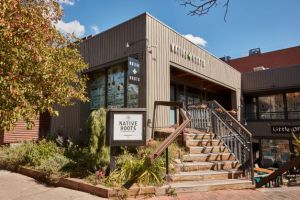
It is quite an amazing story that someone actually found work through LinkedIn, but there was an intermediary of sorts. “Through my departure with P&G, I had a career coach who set me up with a cannabis recruiter just to ask questions and chit chat. He focused on operations, but it was a good relationship building call,” said Dutton. “It happened in September or October, and I didn’t think too much of it until he tagged me on LinkedIn.”
I asked Dutton if, in hiring someone with his experience, Native Roots wanted to do something specific, like increase market share within the state, or promote certain brands or new brands, or go in a new direction in terms of products and the branding that comes along with them? What was it that he brought that they wanted?
“I’m going to be 100 percent honest with you,” he said. “No one has ever told me the answer to this question, but I have an assumption that I’m going to share with you. I honestly think one of the reasons that I was brought into Native Roots was to help Native Roots grow up just a little bit. I brought a lot of corporate policy and structure with me that we enacted where it was necessary or where it made sense. So, I think one of the things I’ve brought to the table is to help Native Roots mature a bit to where we really are the industry leader in Colorado.”
From Whiskers to Weed, with Focus on Flower
I asked Dutton what Native Roots was looking for specifically. “The job was Vice President of Marketing at Native Roots, and they were looking for someone to head up their marketing arm here in Colorado,” he said. “They specialize in manufacturing their own products and in retail, and were focused primarily on being a retail business. I came with my marketing experience at P&G, where my title was basically Director of Marketing. I talked to the entire executive team, the marketing team, the IT team, I met with a bunch of different people, and I had a tour of the grow.
 “I think where our alignment came in is that my career has really been focused on a company where we manufactured our own products, but we were also heavily into retail spaces,” he added. “The Art of Shaving had about 150 locations across the country, so I had that retail mindset with the marketing background, and I knew the production and manufacturing side. Of course, nowhere close to the operations team, but I still knew how things worked in the business sense and it was just a perfect fit.”
“I think where our alignment came in is that my career has really been focused on a company where we manufactured our own products, but we were also heavily into retail spaces,” he added. “The Art of Shaving had about 150 locations across the country, so I had that retail mindset with the marketing background, and I knew the production and manufacturing side. Of course, nowhere close to the operations team, but I still knew how things worked in the business sense and it was just a perfect fit.”
There were other similarities that made for an even better fit. At the Art of Shaving, we primarily dealt in our own branded product,” explained Dutton. “Our core lineup – pre-shave oil, shaving cream, aftershave balm – were all made by the Art of Shaving. Where we dabbled with third-party was in the accessories and additional adjacent categories like skin care.
“It’s very similar at Native Roots,” he continued. “We have our core product here, which is our flower. We make it into concentrates, pre rolls, eighths, all that, but our core is flower, and then we dabble in third party. Actually, we do a little bit more than dabbled, but we have a lot of third-party partners that we work with from the vendor side.”
Two years into his new job, Dutton is now fully engaged in the brand development process, from seed-to-shelf. “I am heavily involved in the development of Native Roots products,” he said when asked. “For instance, our Gold Label joint comes out in about a month and complements our Gold Label flower line that we launched last summer. Both of those were products that I worked on very deeply, very hand-on.
“That’s on the Native Roots side,” he added. “With third party, we have a team that evaluates all the third-party products. I sit on that team, but it’s not just one person’s choice whether or not we carry a third-party product. It’s a team effort, and that’s how we decide what we’re going to bring in, and what we’re not. At the heart of it all is, what does the customer need, and what’s going to satisfy the customer’s desires when they walk in?”
Native Roots operates dispensaries throughout Colorado that are adult-use only, medical only, and a hybrid of both. I asked Dutton if the menus differ much from store to store, and how menu decisions are made. “We look at each store as its own entity within a community, and what does that community need,” he said. “There are different stores that are a bit more high-end, based in communities with a higher average income, and those will carry some higher-priced items. And then we have some stores that are a little bit more on the bargain side, and we try to make sure that those stores are stocked with wallet-friendly choices as well. But I would say we’re about 85 percent the same across the board, so no matter which store you walk into, 85 to 90 percent [of the product] is going to be exactly the same.”
As cannabis markets mature, consumers inevitably start to demand a diversity of product, with flower at the top of the list. It was a reality that played a role in Native Roots decision-making.
“Absolutely, it does,” affirmed Dutton. “Our flower lineup, which we launched last summer, was designed to talk to different price points or customers that are coming in. Even within a mature market, you’ve got different people entering the market at different times, and people are always aging up into the 21 and up category. Of course, people are also aging out, so it is a constantly changing demographic.
“Even within Colorado, we’ve seen that with our three-tiered flower offering,” he added. “We have a lot of customers that gravitate to the wallet-friendly price point of our Green Label, and sometimes they splurge on Onyx or Gold; and then we have customers that will only buy the best of the best.”
As was mentioned in a recent interview with Native Roots COO Beth Kotarba, the company is doing limited-run “drops” of certain strains. It’s something that not only meets demand but also provides a unique marketing opportunity.
“When we do product drops, we try to have a couple of them at every location, no matter what,” said Dutton, adding, “We try. It doesn’t always mean that we succeed because it all depends on how much is produced. But we have an amazing grow team, and we have an R&D facility where they get to go out and basically play. And then we put that product out on the market with a QR code because we want to know what our customers think about it as part of our research and development lineup. Because if our customers love it, we want to keep making it, keep selling it, and make sure that they have it. If our customers don’t respond to it, there’s no point continuing on that path, so it’s a great way for us to decide which strains are popular, which strains or not, and it keeps that variety and that newness super-fresh in our location.”
Cannabis, Van Gogh, and Apparel
With a legacy that reaches back to 2009, Native Roots is a known cannabis brand in Colorado, but that has not stopped it from promoting community engagement that helps it achieve several ends. One in particular – last years’ effort in conjunction with an immersive Van Gogh exhibit in Denver – caught my eye.
“That was a play on brand awareness and making sure that Native Roots name was out there,” said Dutton. “We care a lot about the communities that we work in, and we did a lot of ticket giveaways to the immersive Van Gogh experience. It was our first toe in the pool, if you will, in the post-pandemic world. Unfortunately, the Omicron variant surged during that sponsorship, but that’s why we roll with the punches.

“It’s making sure that we’re out where our customers are, we’re hanging out with them, we’re joining them and having fun,” he added. “Fun is one of our values, and it was a fun sponsorship to do. It achieved all the goals that we set out to achieve, and we’re doing several more sponsorships.”
There are in fact more sponsorships than he could mention in one sitting. “There’s too many to name, but the big one we did was Denver Pride,” said Dutton, listing a few. “We’ve done Pikes Peak Pride down in Colorado Springs. We did Tacolandia last summer and we’re planning on doing that again. Also, Westword Music Showcase, and we are in talks to sponsor SeriesFest, which is going to be out at Red Rocks Amphitheatre, with a very high-profile cannabis-friendly comedian headlining. (Spoiler Alert: It’s Chelsea Handler.) Dutton also noted that in February of this year, Native Roots partnered with the Colorado Department of Transportation to promote “Valentine’s-themed safe-driving messages” during the Valentine’s Day holiday.
In addition to community outreach, Native Roots is bolstering its marketing efforts with apparel offerings, including a limited edition drop this February of The High Collection (T.H.C.), a line that “offers a way to sport your cannabis support anywhere from the slopes to the streets of Colorado.”
I asked Dutton how Native Roots approaches getting people’s attention these days. “The way that we approach it here is, I can go out today and buy every billboard in Colorado and put the Native Roots name on it with some crazy deal, and it might drive traffic, but is it the right traffic, and is it that loyal customer that is always going to come back and shop at Native Roots,” he said. “Probably not, and that’s the person that we want to talk to. We want to get those people that want to grow with us, that want to come into our stores and see what we have, try something new, and really feel like they’ve come home.
“One of the things that we’ve been doing, and a big part of that awareness, is our new apparel line,” he added. “The slogan is ‘from the slopes to the street,’ and it couldn’t be more accurate, because Colorado is a huge playground for America, and when people get here, we want them to go home with something that reminds them of the warm feelings they had when they were here on vacation. Also, we want to make sure that our locals have something fun to wear when they’re out and around town. And cannabis advertising is very limited, so our apparel line is one of the great ways to get our name out into the world.”
That said, is the goal at the end of the day to get people into those stores? “Well, getting people into the stores is basically my entire job,” he answered. “Boiled down into a very simple nugget, my responsibility is to drive warm bodies to our budtenders. That’s my job right there in and of itself, and we tackle that in multiple different ways. Whether through our professional schedule, our product offerings, our promo plans, or any of the channels that we speak to, my team is responsible for not only sponsorship, but we also do all of the social media, the website, which is going to be brand new and launching at the end of March, all the SMS, the email, our loyalty program, search engine.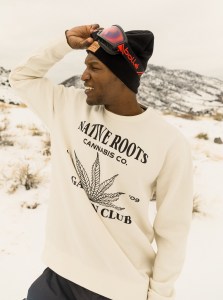
“We also have a great brand ambassador who goes out and educates people and reports to the marketing function,” he added. “It’s a huge cohesive effort to make sure that when you think about cannabis in Colorado, you’re thinking about Native Roots, and because we care about the community so much, we want to make sure that each one of our stores is speaking to that and as a member of their community as well.”
Data is of course an essential component of running an efficient company. I asked Dutton if real-time data is important in today’s fast-paced environment. “Yes, I would say so,” he replied. “I get a number of daily reports. We just did a test launch of a product that we were thinking about making. We headed out into the store last Friday to see what customers thought of it. We’ve already regrouped and had a meeting on how to launch it fully across all of the brands, and the data was coming in almost instantaneously that customers love this product.”
Could it lead to price changes on the fly? “No,” stated Dutton. “In my opinion, that deteriorates the customer experience. If you were to come in today and buy something and tomorrow you came in and it was $10 more, that is a horrible customer experience. I never want to do that to any of our customers, and that is not something that happens at Native Roots. We are not that price sensitive.”
What about the price sensitivity of the consumer? “It is very different today than it was when I started 23 months ago,” said Dutton. “Where it is affecting my job is margins are smaller, and price sensitivity is out there, but where we are trying to focus at Native Roots is on when we need to spend money and spending it on the right things, not just because, and making sure that at the heart of everything we do that we have the customer in mind, whether it’s price increase, price decrease, something we can do to affect margin, etcetera. It’s always about what’s going to be best for the customer.”
I also wondered if third-party vendors feeling margin-stress are a factor. “Our product supply team is the frontline relationship with our third-party vendors, so I don’t see it quite as much on the marketing side,” said Dutton. “I do work with their marketing teams on how to increase support or sales but not necessarily the relationship itself. However, I do know that third-party vendors are suffering just like everyone else in the industry. We’ve created some really good lasting partnerships where we can have those open and frank conversations with the brands. Wana comes to mind. We have an amazing relationship, and we’re constantly talking to them about their issues with price, cost, etc., and making sure that we have the right margins to keep our stores open. But it does affect third-party relationships and it gets a little tough sometimes.”
Branding Native Roots
Native Roots is a vertical single-state entity, but I wondered to what extent Dutton looks at a state like California, for instance, and wonders if they share similar fates. “I think Colorado is different,” he said, “but we watch what’s going on in California, absolutely. Does it keep me up at night? It does not. We’re a fraction of the size of California, which is like the fifth largest economy in the world.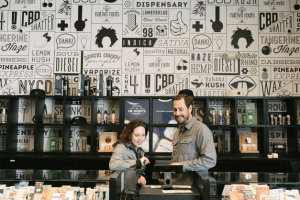
“There are about 6 million people in Colorado, and there are 6 million people in San Francisco alone, so it’s just not the same,” he added. “I like to look at Oregon and Washington when I’m thinking about Colorado and see what’s going on in those two states more than what’s happening in California. But Colorado is a unique market. We’re the largest locally owned and operated dispensary chain in the state, and we’ve been leaning into the ‘shop local’ bandwagon that’s been kind of taking over. I’ve seen it all over the place lately, and I think it speaks to the climate here in Colorado and to the people that live here, that they want to support local Colorado brands.”
Sales were down in Colorado last year, but the pandemic had already thrown normal accounting out the window. “Even in 2022, we were not comparing our numbers to 2021, which we’ve kind of pulled out as an anomaly,” said Dutton.
What metrics does Dutton use to evaluate his own performance? “The metric that I’m looking at the most might be surprising, but it’s transaction count,” he said. “That’s where I spend the most amount of my time because that tells me how many people are coming in and spending. The second metric I always like to look at is average order value. How much are they spending when they come in? And then the other thing that I always find interesting is the return time; how many days does it take for a Native Roots customer to come back.
“Those three metrics are what I focus on the most under the whole umbrella of overall sales,” he added. “A lot of people like to talk KPIs and percentages, but percentages don’t pay payroll, so you’ve got to look at the overall solid number, and then transaction count, average order value, and time to return are the three that I focused on the most.”
And in terms of brand prominence, where are the various products placed marketing-wise? Is apparel, for instance, as a new offering, a priority? “First and foremost, we are a cannabis brand, and we grow amazing flower, and that’s our number one focus, our flower product that we put out into the world,” said Dutton. “The ancillary categories that come along with that are always fun to play in, and apparel has been a blast to produce and come up with and get it out into the marketplace, and seeing how people love it warms my heart. But at the end of the day, we’re a flower company. The number one product that we make is flower that we grow at our mothership. All these other categories that go along with it are like a halo effect to help support the brand, so it has a lifestyle, and Native Roots is very big on the Colorado lifestyle, mountains, outdoor activities, etc., and the apparel line was designed to fit into that.”
Native Roots offers more than flower and apparel, of course. Ancillary categories include prerolls, edibles, vapes, and concentrates, including the Spectra and Revel lines. “We’ve got a couple of new products coming out,” Dutton shared. “With our Gold Label line that launched last summer, we’ve got our Gold Label joint coming out that’s going to feature a glass tip. It’s amazing. We also have a Shortys variety pack. These are quarter-gram joints that usually come in a pack of five, but we are repackaging them up into a package of 12, and you get four Shortys from three different mood states.
Mood State Matrix
“The mood state matrix is something that Native Roots has been working on for the last 18 months and is an engineer-led process,” he explained. “We have an engineer on staff who took hundreds of surveys about different flower strains and created this beautiful mood state matrix where you can actually shop by effect versus indica, sativa, and hybrid, which is over 200 years old and frankly out of date.”
The matrix includes other products as well. “Flower, concentrates, and prerolls are already in the mood state matrix, and that appears on the batch label,” said Dutton. “The next phase of the mood state matrix is slotting Spectra into that because it’s strain-specific. Spectra vape cartridges are designed to have the same effect as smoking a joint, just in a more convenient, easy, and more discreet method, and all Spectra vapes will fall into the mood state matrix. Revel is based on flavor and is already a hybrid that acts as a hybrid and will pretty much be a hybrid. It will not fall into the mood state matrix because it is not strain-specific. It’s for people who want the Pumpkin Spice-flavored vape.”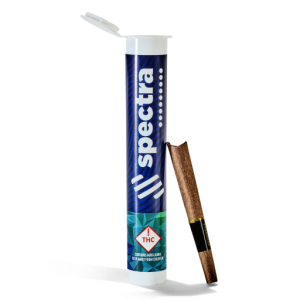
What about edibles carried by Native Roots? “From your traditional edibles market, we do not produce an edible,” said Dutton. “We have great third-party vendors. Wana and Wyld make wonderful edibles, and we don’t see the need to get into that market because we’ve already got great products. Where we are in the market though is with Mr. Moxey’s Mints. We don’t own Mr. Moxey’s, but we are the exclusive producer of Mr. Moxey’s Mints for the state of Colorado. If you’re not familiar with the brand, Mr. Moxey’s is a low-THC mint offering with six different mood states depending on what you’re looking for. They are closely aligned to the mood states we launched at Native Roots. We just did five, they got six, but they flow really nicely together.”
Topicals and tinctures are also a third-party offering. “I absolutely love topicals and I have recently gotten into tinctures as well,” said Dutton. “My partner has given up alcohol for a while, and the mocktails he’s been making with cannabis have been amazing. But we do not produce topicals or tinctures, but with both of those lineups, we’ve got great third-party partners.”
Dutton said a new product is coming down the line. “We’re not producing it, but we are going to be carrying it and launching it in our stores in March,” he said. “I think that product has the potential to change the way you smoke a preroll. It’s an infusion stick with like a toothpick of live resin, and you slide it into your preroll. I think it is something that is unique and different. We’ve also got some great new flavors coming out in our Revel lineup, which is going to be really fun.”
Is the Native Roots brand his primary focus and under that the subsidiary brands? “The Native Roots brand is my number one focus,” he affirmed. “There are other brands – Spectra, Revel, the flower brands – that fall under that, but Native Roots is our primary focus here, it always has been, and I think it always will be. To stand out from the crowd, you’ve got to have consistent in-store experience and you’ve got to have friendly budtenders. Our budtenders are our front-line workers and I think they are the number one most crucial piece of our business, because if our budtenders don’t enjoy Native Roots, then why will our customers.
“We are one of the Colorado Civic 50 honorees and a top cannabis industry pick from mg magazine, the only Colorado dispensary chain to make it onto the list, and our second time in a row being one of the best places to work. I think that’s where creating a sticky brand starts, with the people who are in the field and who work at Native Roots, so that when our customers come in, they not only get a great experience, it’s a genuine experience.”
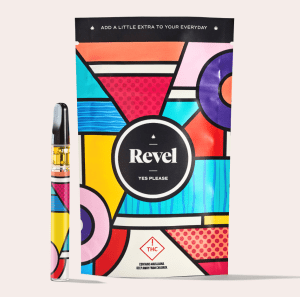 Before I let him go, I asked Dutton, who has worked at one of the nation’s largest companies, where he thinks the cannabis industry is in terms of its development. “We are a very mature market in Colorado compared to the rest of the country, but we are still a brand-new industry,” he said. “We’re an emerging industry, and I don’t even think the tip of the iceberg has surfaced yet. That’s how much further this industry has to go before we, quote unquote, grow up, but we’re on that path, and I think we’re making really good strides. Where we’ve got to figure out our path forward is through regulation. There are some really silly regulations that comes from the false stigmatization of cannabis.
Before I let him go, I asked Dutton, who has worked at one of the nation’s largest companies, where he thinks the cannabis industry is in terms of its development. “We are a very mature market in Colorado compared to the rest of the country, but we are still a brand-new industry,” he said. “We’re an emerging industry, and I don’t even think the tip of the iceberg has surfaced yet. That’s how much further this industry has to go before we, quote unquote, grow up, but we’re on that path, and I think we’re making really good strides. Where we’ve got to figure out our path forward is through regulation. There are some really silly regulations that comes from the false stigmatization of cannabis.
“For instance,” he added, “we sponsored Denver Pride, and wanted to have an education booth where people could come up to our booth and learn about cannabis. It was purely educational, we cannot sell in the park and we didn’t want to sell in the park, but we had to have our tent completely blacked out with no logos anywhere, because people passing by might not be 21, and therefore they shouldn’t be learning about cannabis. But you had two liquor companies passing out samples and sponsoring the parade and giving out flags left and right to anyone who walked by. So, I think our number one thing right now is getting the proper regulations in place, because they’re not there at the moment, and that’s the first step to becoming the mature industry that we want to be.”
I noted how strange it was to move from California to Connecticut, where the retail experience is so different and somewhat alienating. Dutton said he had a similar sensation when shopping in Illinois. “Everything had to be done online, even when you walked into a store,” he said “Being in the cannabis industry, I wanted to walk around and touch and smell. I wanted a regular retail experience, as if I was buying a sweater at Banana Republic. But instead, I was directed by a security guard to place my order on a kiosk and then go stand in the back and wait for them to bring my product out to take it home. It was horrible, and I feel like we’ve got to figure out how to get the shopping experience where it needs to be, because people like to shop, and when they go out to shop, they want to be able to touch something, feel it, smell it. I’m not saying we need to taste samples in the store or anything like that, but how can we get to a regular retail shopping experience, and it starts with regulations.”
Does that mean he’s staying in cannabis for the long haul? “I hope so,” said Dutton. “I really like it. We’ll see where the future takes me, but as of right now I have no plans to leave.”
MJ Shareholders
MJShareholders.com is the largest dedicated financial network and leading corporate communications firm serving the legal cannabis industry. Our network aims to connect public marijuana companies with these focused cannabis audiences across the US and Canada that are critical for growth: Short and long term cannabis investors Active funding sources Mainstream media Business leaders Cannabis consumers










No comments so far.
Be first to leave comment below.